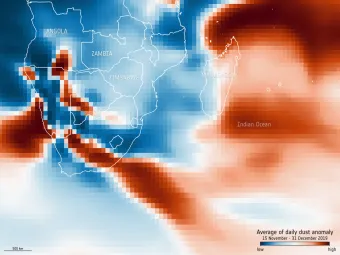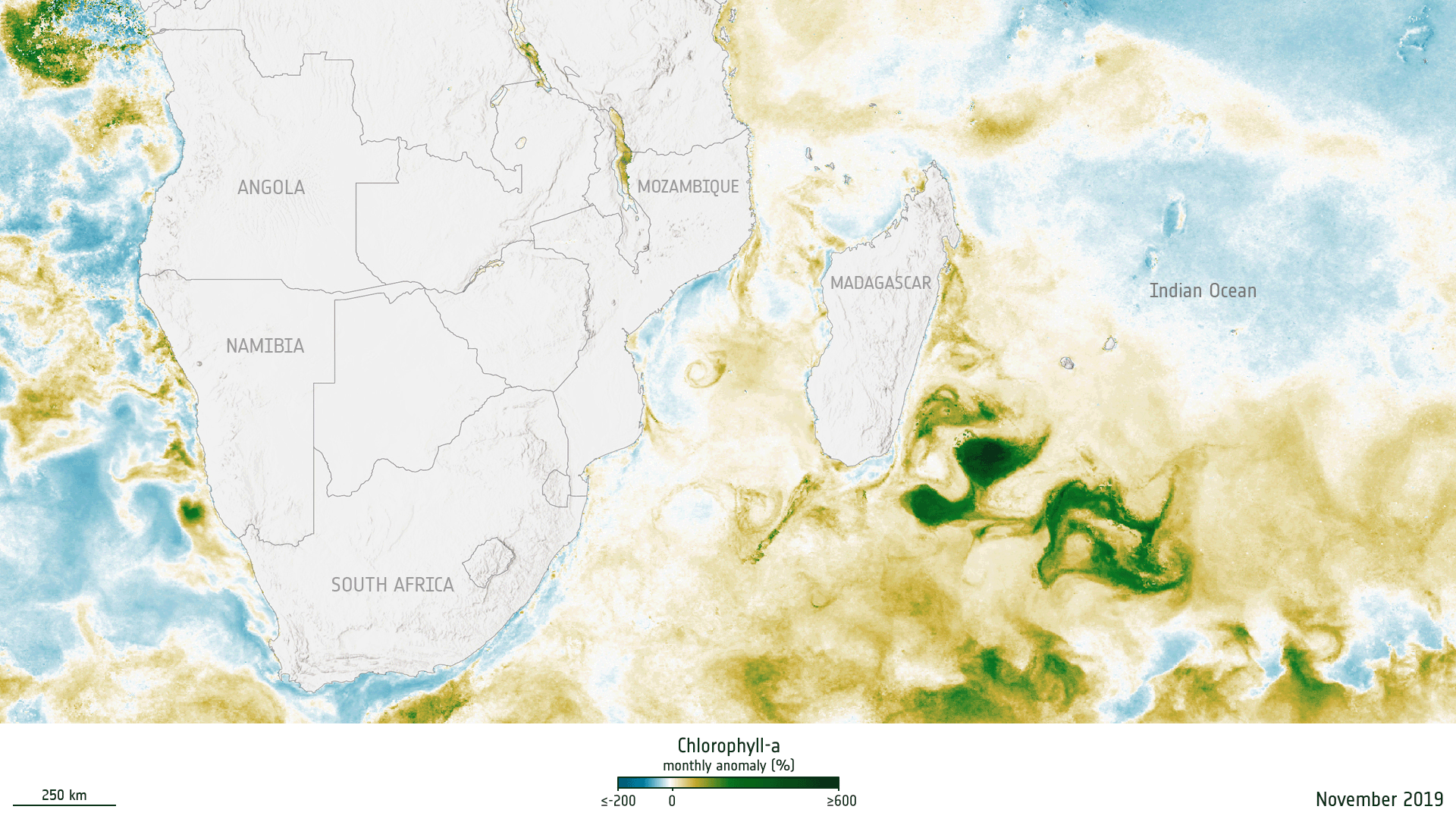
Increasing drought events in southern Africa could benefit Indian Ocean marine life and atmospheric carbon removal, according to a new study of the Madagascar Bloom – one of the world’s largest recorded phytoplankton blooms.
The study, led by the University of Athens (NKUA) and co-authored by scientists at the UK’s National Oceanography Centre (NOC), linked the unprecedented marine algal bloom to an influx of nutrient-containing dust blown over the Indian Ocean from South Africa. This saw phytoplankton levels at three times the level normally expected at the time of year it occurred, spreading from southeast of Madagascar into the wider Indian Ocean for three weeks longer than normal.
These marine algae form the basis of the marine food chain and help to remove carbon dioxide from the atmosphere by using it to grow then being eaten or dying and falling as organic matter to the seafloor.
NOC co-author, Dr Fatma Jebri, says “Our study shows how African desert dust being blown over and deposited onto the ocean surface was key in triggering this unprecedented oceanic phytoplankton bloom in the Southeast of Madagascar, at a time of the year when blooms are uncommon.”

Professor Meric Srokosz, also from NOC, adds “This is important as it suggests that as deserts release more dust into the air and that dust settles on the ocean’s surface, it could help phytoplankton growth, potentially increasing the amount of CO2 the ocean absorbs from the atmosphere.”
The study used satellite data to study the causes of major phytoplankton blooms, focusing on the unprecedented Madagascar Bloom in late 2019 to early 2020, which was found to be the largest on record going back 24 years. It’s already known that dust from the Sahara Desert often crosses the Atlantic Ocean to the Americas and that when these particles settle on land or in the ocean, they deliver essential nutrients that may boost plant and marine life growth.
However, the relationship between desertification, dust emissions and ocean fertilisation has been poorly understood. The new study, published in PNAS Nexus, marks a significant step in unravelling these connections. The scientists worked through the European Space Agency’s (ESA) Living Planet Fellowships Poseidon and Pyroplankton.
Lead author, John Gittings, from the University of Athens, says “In addition to satellite data from the ESA Climate Change Initiative Ocean Colour project, we utilised information from ESA’s Climate Change Initiative Soil Moisture project and ESA’s Science for Society Biological Pump and Carbon Exchange Processes project. We also incorporated satellite data from the Copernicus Atmosphere Monitoring Service and the Copernicus Marine Service. Having access to such rich satellite datasets enabled us to clearly track the extent of this massive bloom and pinpoint the dust events responsible for it.”
Dive deeper
Read the full study.
Read ESA’s story on the record bloom.